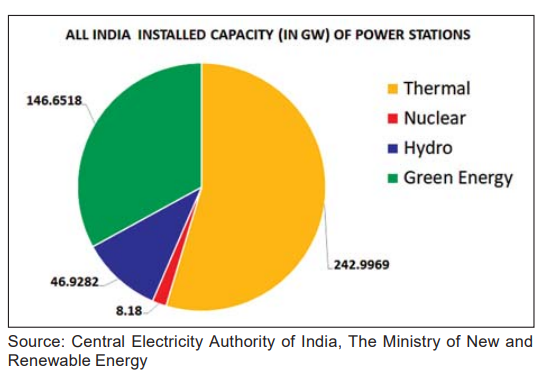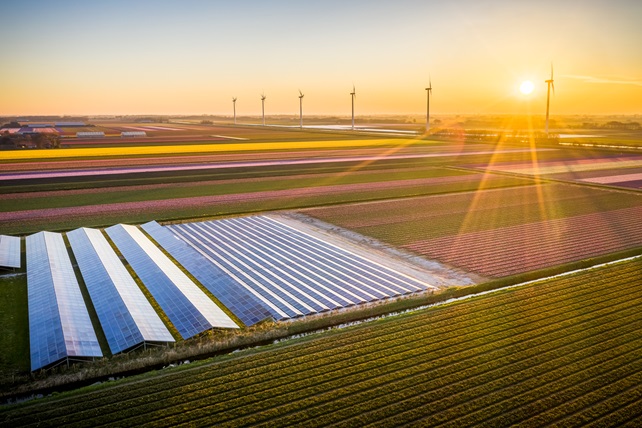India is at the forefront of a major transformation in the global energy landscape. As the world’s fourth-largest consumer of electricity and third-largest producer of renewable energy, India is on an ambitious path to meet its growing energy demand through sustainable means. Globally, the drive for cleaner energy has significantly boosted the demand for industrial metals, and aluminium is one of the top gainers in this quest. According to International Aluminium Institute, the renewable energy sector will offer a significant drive to the demand for aluminium from building solar panels to the power distribution. By 2030, electric sector is expected to require an additional 5.2 metric tonne aluminium. In India, aluminium is a widely used commodity with the production growing at a faster pace due its predominant usage in power sector.
The rural electrification will be a key factor driving demand for the metal in the country. A vast number of rural population in India still lack access to electricity, indicating a critical disparity in the distribution of electricity between rural and urban population. Through Deen Dayal Upadhyaya Gram Jyoti Yojana scheme (DDUGJY) launched in December 2014 and Pradhan Mantri Sahaj Bijli Har Ghar Yojana (SAUBHAGYA) in October 2017, the country is focussed on strengthening electricity distribution networks to reach rural households. Recently, the government has been focusing on the mini-grid and stand-alone solar home systems to provide access to the remote and hard to access areas.
The government’s initiatives to push Electric Vehicle (EV) manufacturing and adoption is projected boost the demand for the metal. The EV sector has witnessed considerable progress in the recent years due to FAME India Scheme (Faster Adoption and Manufacturing of Hybrid and Electric Vehicles in India), implemented by the Ministry of Heavy Industries to support electrification of public and shared transportation. With a cumulative support from central and state governments through various schemes and subsidies, the nation is striving towards achieving India’s ambitious goal of targeting 30 percent of new vehicle sales to be electric by 2030. However, the nation’s battle to reduce carbon emissions can succeed only by increasing dependence on renewable energy, such as solar and wind, where the metal plays a crucial role.
India’s pledge to generate 50 percent of its electricity from renewable sources by 2030 and to achieve net-zero carbon emissions by 2070 marks a pivotal moment in the global fight against climate change. This ambitious target aligns with the increasing energy demands driven by India’s rapid economic growth and development, projected to reach 15,820 TWh by 2040. The nation is poised to see the highest increase in energy demand globally in the coming decades, necessitating a substantial shift towards low-carbon renewable energy sources.

Aluminium benefits significantly from solar energy projects, a key component of India’s renewable energy strategy. As a sun-drenched country, India ranks fifth globally in installed solar energy capacity. Aluminium is essential in clean energy technologies, particularly in photovoltaic (PV) solar panels, where it constitutes 85 percent of components such as frames and mounting structures. These components are crucial for holding PV panels together and supporting them. In wind power, lightweight aluminium alloys are used in turbine blades and tower platforms, particularly in offshore farms, offering a high strength-to-weight ratio and superior corrosion resistance, which improve efficiency and durability.
India’s renewable energy sector has been growing at an impressive pace. As of FY2022-23, the country ranked fourth globally in wind power capacity, solar power capacity and overall renewable energy installed capacity. Between FY2015-16 and FY2022-23, India posted a compound annual growth rate (CAGR) of 15.4 percent in installed renewable power generation capacity, reaching 125.15 GW. The data from the Ministry of New and Renewable Energy (MNRE) showed that India’s installed green energy capacity, including solar and wind energy, is 146.65 GW as on 30 April 2024. This accounts 33 percent of the total installed power generation capacity in the country. With the government’s robust support and improving economic viability, renewable energy has become an attractive sector for investors. By 2026, new capacity additions are expected to double, reinforcing India’s position as the fastest-growing market for renewable electricity. To achieve its ambitious target of 500 GW of renewable energy capacity, India aims to bid for approximately 50 GW of renewable energy projects per annum.
(Source: Central Electricity Authority of India, The Ministry of New and Renewable Energy)
Aluminium’s integration into the renewable energy market offers several economic advantages. The Indian government has implemented a 40 percent anti-dumping duty on imported solar components since April 2022 to encourage domestic production. Being the fourth largest producer of aluminium in the world with a share of around 5.3 percent of the global aluminium output, India has the potential to meet its domestic consumption needs of aluminium. Presently, the per capita aluminium consumption in India at 2.7 kilogram, which is much lower compared to the global average of 11 kilogram. Considering this scenario, policies that aims to boost local manufacturing could position India as a global hub for aluminium solar PV components.
India’s green energy transition is a vital component in its sustainable development strategy. As India aims to meet its burgeoning energy demands through clean sources, the aluminium industry is poised to play a pivotal role in this transformation. With continued government support and strategic investments, India can solidify its position as a leader in the global renewable energy market and pave the way for a sustainable future.







